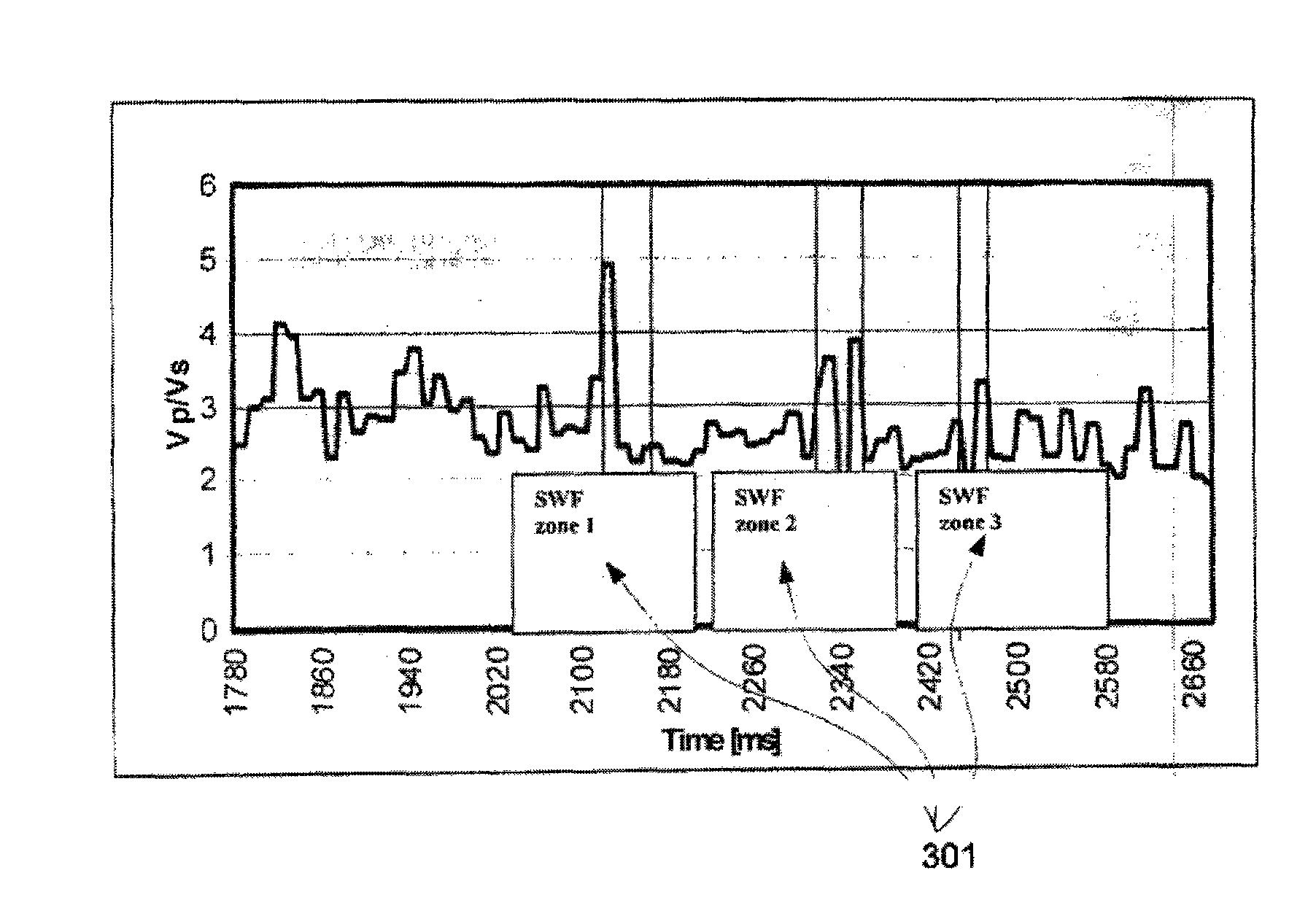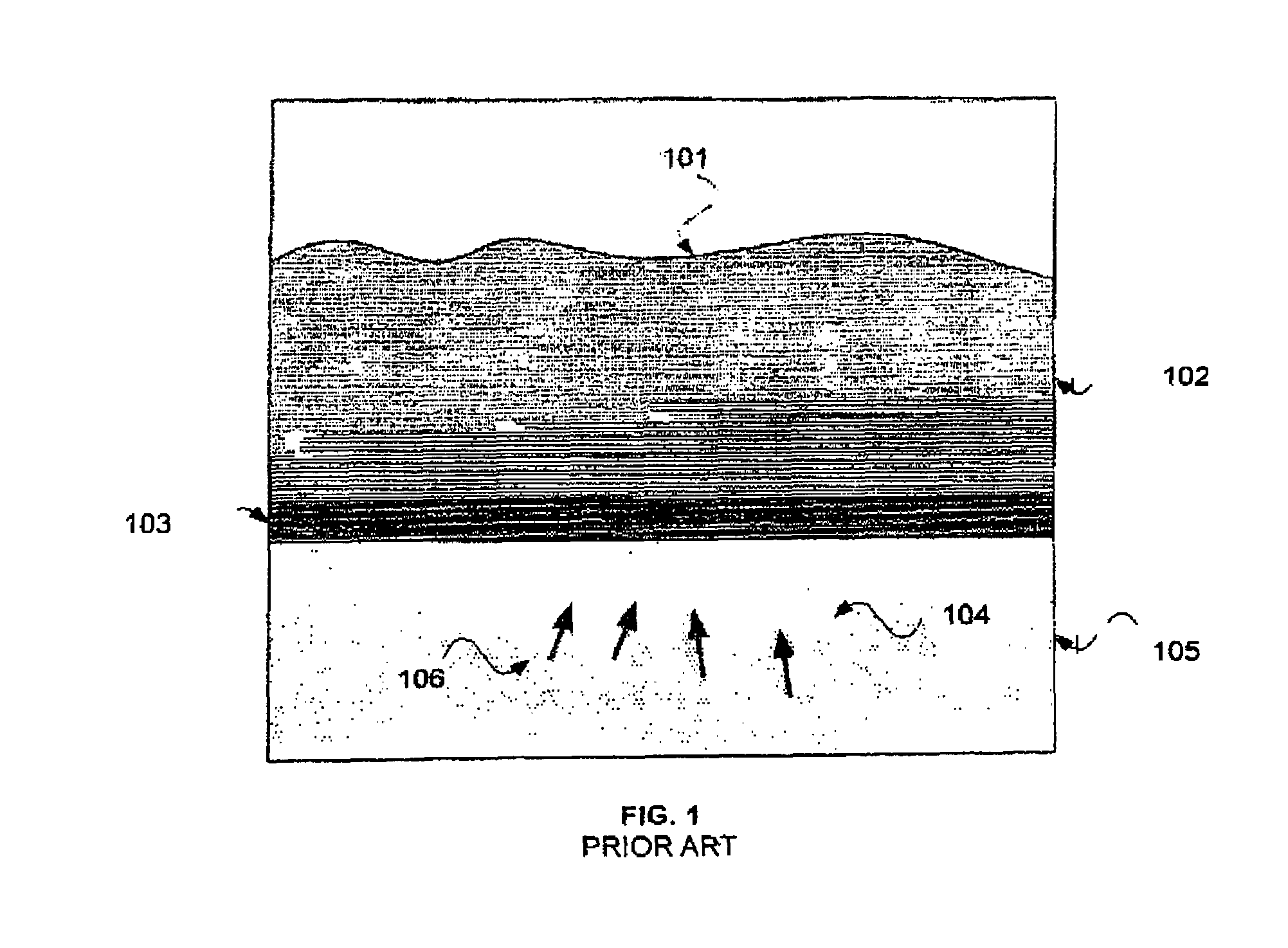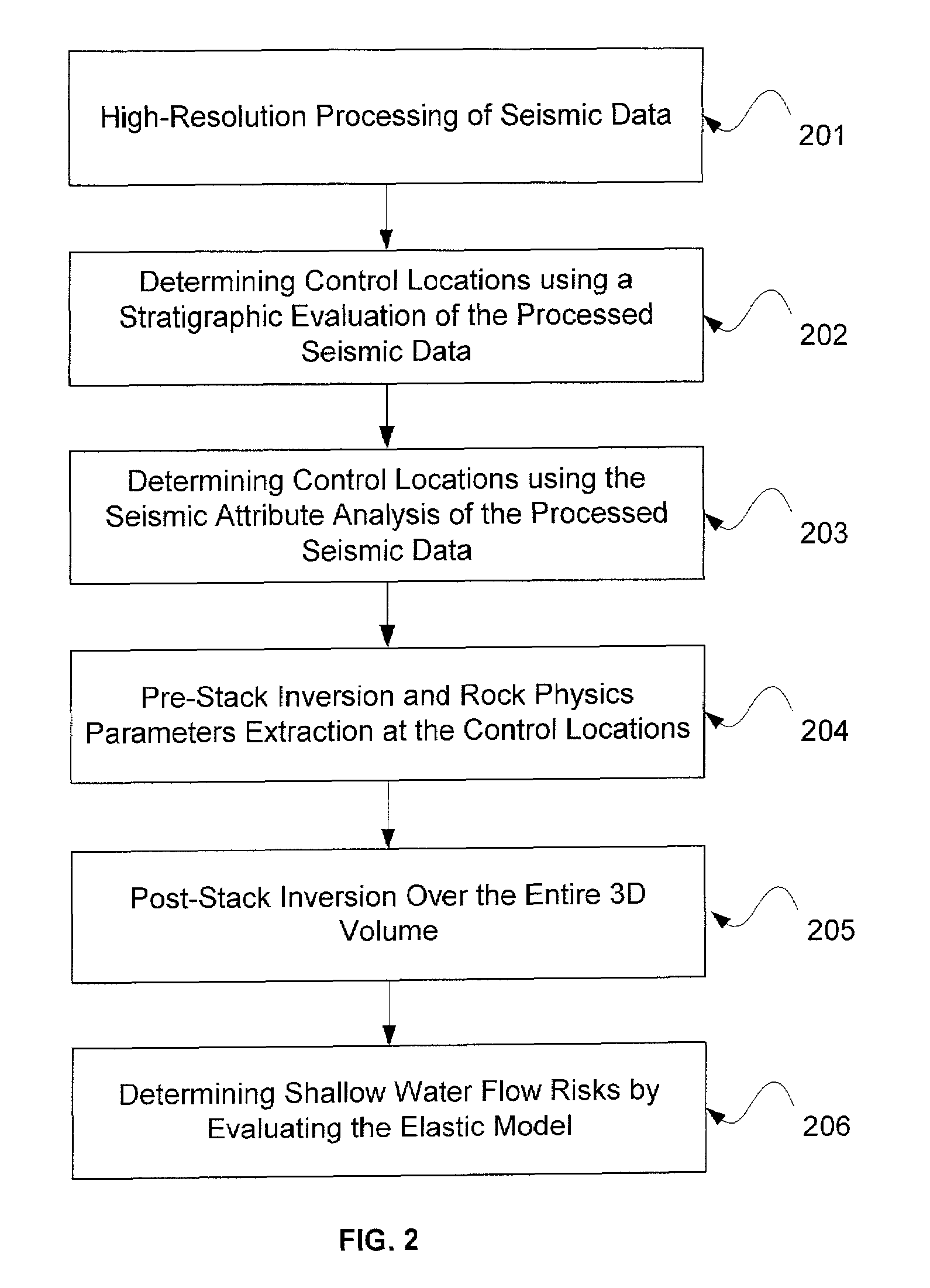Method for shallow water flow detection
a technology of shallow water flow and detection method, which is applied in the direction of instruments, analogue processes for specific applications, electric/magnetic computing, etc., can solve the problems of swf layers costing the oil industry hundreds of millions of dollars to date, and can be expensive and risky for drilling for fossil fuels in deepwater targets
- Summary
- Abstract
- Description
- Claims
- Application Information
AI Technical Summary
Benefits of technology
Problems solved by technology
Method used
Image
Examples
Embodiment Construction
[0030]Surface seismic data are useful in predicting SWF zones because they are available before drilling begins in the deepwater wells.
Processing of High-Resolution 3D Seismic Data
[0031]FIG. 2 shows a flowchart for the detection of SWF. First, seismic data can be processed to enhance its stratigraphic resolution 201. The stratigraphic resolution is the ability to differentiate and resolve stratigraphic features in a seismic image. The enhanced resolution improves the frequency content of the seismic data and can be used more effectively to detect thin sand bodies.
[0032]The seismic data that is used can either be acquired solely for detection of SWF, or can be seismic data that has been acquired for different modeling purposes, and reprocessed for detection of SWF. The seismic data can be three-dimensional (“3D”), two-dimensional (“2D”), or one-dimensional (“1D”) data. For example, borehole 1D data can be used to detect SWF, and full 3D seismic data can be used to detect SWF in a wel...
PUM
 Login to View More
Login to View More Abstract
Description
Claims
Application Information
 Login to View More
Login to View More - R&D
- Intellectual Property
- Life Sciences
- Materials
- Tech Scout
- Unparalleled Data Quality
- Higher Quality Content
- 60% Fewer Hallucinations
Browse by: Latest US Patents, China's latest patents, Technical Efficacy Thesaurus, Application Domain, Technology Topic, Popular Technical Reports.
© 2025 PatSnap. All rights reserved.Legal|Privacy policy|Modern Slavery Act Transparency Statement|Sitemap|About US| Contact US: help@patsnap.com



